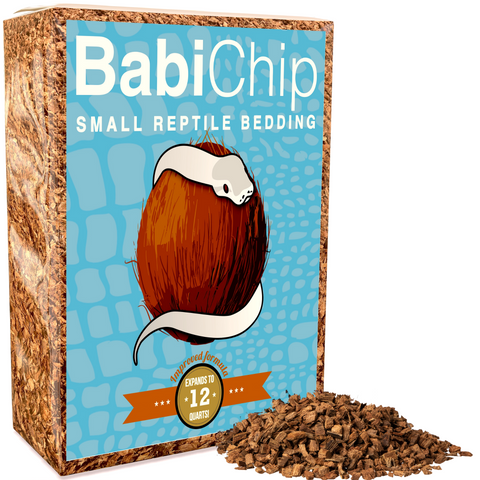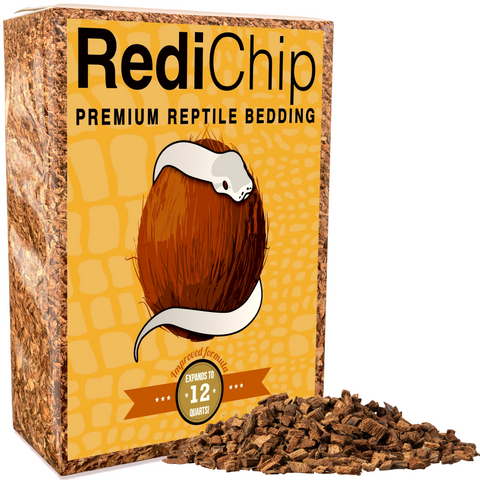Panther Chameleon
Furcifer pardalis
Natural History
The panther chameleon is a vibrant and visually striking lizard native to the eastern and northwestern coastal regions of Madagascar, where it inhabits tropical forests, scrublands, and forest edges. From hatchling to adult, its life cycle reveals a fascinating journey shaped by rapid growth, seasonal reproductive strategies, and a relatively brief but intensely active lifespan. Hatchlings emerge from eggs after an incubation period averaging 6 to 12 months, depending on environmental temperatures and local climate conditions. Newly hatched individuals measure about 3 to 4 inches in length and are immediately independent, receiving no parental care. Growth is swift during the first year, with males often reaching sexual maturity between 7 and 9 months of age, while females mature slightly earlier, around 6 months. Adult panther chameleons typically reach lengths ranging from 12 to 20 inches, with males being notably larger and more vividly colored than females. In optimal conditions, they can live anywhere from 3 to 7 years, although wild individuals often face higher mortality due to predation, disease, and environmental stressors.
Reproductive activity is highly seasonal in the wild and often triggered by rainfall and temperature changes. Males engage in elaborate displays to attract females, including color intensification and physical gestures like head-bobbing and lateral body flattening. Once receptive, females display specific coloration indicating readiness to mate. After successful copulation, a female lays a clutch of 10 to 40 eggs in a shallow burrow she excavates in soft soil. Once laid, the eggs are left unattended, with no further involvement from either parent, a common trait among chameleons.
The panther chameleon is a solitary and primarily diurnal species, active during daylight hours when it forages for insect prey and thermoregulates by basking in sunlit areas. As highly visual predators, they rely on exceptional eyesight and an independently mobile eye system allowing them a nearly 360-degree field of view. They employ a sit-and-wait hunting strategy, remaining motionless for extended periods and rapidly projecting their long, sticky tongues—sometimes exceeding the length of their body—to snatch insects, arachnids, and other small invertebrates with remarkable accuracy. Territorial by nature, especially in males, they exhibit visual posturing and striking color changes to communicate dominance or submission. Aggressive encounters among males can include pushing, biting, and further color intensification, while females may display darker colors when rejecting advances or when gravid.
Defensively, panther chameleons rely more on camouflage and threat displays than physical aggression. When threatened, they may gape their mouths, inflate their bodies, and show vibrant warning colors to deter predators. These behaviors are supported by their specialized feet, prehensile tails, and zygodactylous toe arrangement, all suited for grasping narrow branches and navigating complex arboreal environments. Their color-changing ability, often misunderstood as purely camouflage, also plays a significant role in thermoregulation, emotional signaling, and social communication.
Ecologically, the panther chameleon plays a vital role in maintaining insect populations, acting as a natural means of pest control. As mid-level predators, they contribute to balancing trophic dynamics within their habitat. In turn, they are preyed upon by birds, snakes, and small mammals, especially during their vulnerable juvenile stages. The chameleon’s reliance on healthy forest ecosystems makes them sensitive indicators of environmental change, particularly deforestation and habitat degradation. Their survival strategies—cryptic coloration, arboreal agility, and keen sensory perception—are tightly integrated with their native ecosystem. In areas where forest cover is preserved, these lizards flourish as agile insect hunters that help regulate the balance of terrestrial arthropod populations.
Understanding the biology and behavior of the panther chameleon is essential for providing proper care in captivity. By appreciating its role in nature—as both predator and prey, solitary specialist, and thermoregulating visual communicator—keepers can more responsibly replicate the complexity of its natural environment, contributing to its health, longevity, and overall welfare.
Conservation Status
The Panther Chameleon is currently classified as "Least Concern" on the IUCN Red List. This category signifies that, although the species is not presently facing a high risk of extinction in the wild, it should still be monitored due to potential threats that could influence its future population dynamics. Panther Chameleons have a relatively stable population in their native habitat, which is the northern and eastern regions of Madagascar. Their distribution is fairly broad compared to other chameleon species, and they remain locally abundant in many areas where suitable habitat still exists. However, this stability is heavily dependent on continued conservation efforts and habitat protection, as their range is increasingly surrounded by human activity.
The primary threats to Panther Chameleons stem from habitat loss, primarily due to deforestation for agriculture, logging, charcoal production, and urban development. Madagascar’s forests, especially along the eastern coast, have been extensively fragmented and degraded, leading to reduced territory for native species. Since Panther Chameleons rely on dense vegetation for shelter, hunting, and thermoregulation, even slight modifications to their environment can create unfavorable conditions. Another significant concern is the pet trade, which, although partially regulated, still contributes to the removal of wild individuals. While captive breeding has lessened the burden on wild populations in recent years, illegal collection and unregulated export remain problems in some regions. Additionally, climate change poses a long-term threat by altering precipitation patterns and increasing the frequency of extreme weather events, potentially disrupting breeding cycles and habitat suitability.
Efforts to protect the Panther Chameleon are primarily centered on habitat conservation and trade regulation. Portions of its native habitat fall within protected areas and reserves where deforestation is limited through national legislation and international support. Organizations working in Madagascar focus on reforestation projects and community-based conservation strategies, aiming not only to restore chameleon habitats but also to create sustainable livelihoods for local people. This approach helps reduce the dependence on activities that contribute to habitat destruction.
In terms of international efforts, Panther Chameleons are listed under Appendix II of the Convention on International Trade in Endangered Species (CITES), which regulates their export to ensure that wild populations are not further depleted. Export quotas and stricter controls have been implemented to discourage mass collection from the wild, especially since confiscations in transit have historically indicated overharvesting. Additionally, captive breeding programs in both Madagascar and abroad have made significant progress in supplying the pet trade with captive-produced individuals. These programs not only reduce demand for wild-caught chameleons but also serve as important genetic reservoirs that may support future conservation or reintroduction initiatives, should the need arise. Continued monitoring, public education, and global cooperation are essential to maintain the species’ current status and ensure long-term sustainability.
Native Range
The panther chameleon is native to the northern and eastern coastal regions of Madagascar, an island renowned for its high levels of endemism and ecological diversity. Within this range, the species is predominantly distributed from the Sambava region in the northeast down to areas near Toamasina along the central east coast. It occupies a somewhat restricted but well-defined geographic range, with some isolated populations identified in pockets of suitable habitat along the coast. The distribution aligns closely with climatic zones characterized by high rainfall and substantial vegetative cover, differing slightly in coloration and pattern between regional populations as a result of geographic isolation and microhabitat variation.
In terms of macrohabitat, the panther chameleon thrives in tropical humid forests, including both primary and secondary lowland rainforests and dense coastal forest margins. It is typically not found in Madagascar's arid western regions or higher elevation interior. The species favors habitats with a high density of foliage, such as those provided by disturbed forest edges, regenerating scrubland, and even plantations or gardens near natural forest, especially when these mimic natural structural complexity. These environments provide ample climbing structure, camouflage opportunities, and temperature gradients.
At the microhabitat scale, panther chameleons are highly arboreal and spend most of their time in the mid to upper canopy layers, between approximately 3 and 10 feet above the ground. They rely on dense leafy vegetation for cover, thermoregulation, and hunting. Preferred microhabitats include the branching midstory of shrubs and understory trees, where filtered light and partial sun exposure support their need for controlled basking. They avoid fully exposed perches during the hottest parts of the day and retreat into shade or thickets to regulate body temperature.
Panther chameleons are adapted to warm, humid climates. Annual daytime temperatures in their native range typically fall between 75 and 88°F, with nighttime lows averaging between 65 and 72°F. Peak daytime temperatures may on occasion reach into the low 90s°F, but the species avoids prolonged exposure to excessive heat. Humidity is consistently high throughout the year, often ranging between 65% and 85%, with frequent rainfall distributed fairly evenly, although there is a slightly drier season from May to October. During the wetter months (November through April), increased precipitation coincides with breeding activity and heightened foraging behavior.
This species is primarily associated with lowland environments, most often found below 1,300 feet in elevation. While the eastern highlands of Madagascar can reach considerably higher altitudes, panther chameleons are seldom recorded in montane ecosystems, partly due to cooler temperatures and differing vegetative structure. Their preference for warm, stable microclimates makes higher elevations unsuitable for sustained habitation.
Key environmental factors essential to the panther chameleon's survival include consistent access to vertical climbing structures, such as interwoven branches and dense vegetation, which allow for mobility, visual communication, and escape from predators. Access to dew or rainwater from foliage is also critical, as they primarily hydrate by licking water droplets from leaves. The presence of canopy cover that provides a gradient of light and shade is essential for behavioral thermoregulation, while underlying soil composition, although not directly used for burrowing, can influence vegetation density and local humidity levels. These integrated features of southeastern Madagascar’s lowland humid forests provide the exact balance of temperature, humidity, and structural complexity necessary for this species’ wellbeing.
Behavior
Panther chameleons are diurnal reptiles, meaning they are primarily active during daylight hours. In their natural habitat, they rely on the equatorial sun to establish their daily rhythm, which typically starts with morning basking to raise their body temperature. This basking activity allows them to become physiologically active enough to hunt and interact. Seasonal variations in behavior are important to note. During cooler or drier seasons, their activity may decrease modestly, though they do not undergo true brumation. In captivity, reduced lighting schedules in winter months can slightly alter activity levels, but overall, they remain diurnally active year-round under stable husbandry conditions. During the breeding season, which is typically tied to the local climate's warm and humid periods, heightened territoriality and an increase in visual signaling are notable.
Socially, panther chameleons are solitary and exhibit strong territorial behavior, especially among adult males. In the wild, male-male interactions involve a series of escalating visual displays, such as bright color changes, lateral body compression, and head bobs to establish dominance without physical confrontation unless confined. Males will actively patrol and defend territories ranging from 10 to 30 feet in diameter, depending on environmental conditions. Females are also solitary, tolerating males only during narrow reproductive windows. Once a female becomes gravid, her coloration shifts dramatically to a darker palette with bold patterning, signaling unreceptiveness and often prompting aggressive displays to deter further advances. Parental care is non-existent in this species; once eggs are deposited in a suitable substrate, the female abandons the site.
The panther chameleon’s response to environmental stimuli is highly attuned. Temperature gradients are crucial for their physiological regulation; they thermoregulate through behavioral means such as basking in warmer areas and retreating to shaded locations to avoid overheating. Their optimal activity temperatures range from 75°F on the cool end to around 90–95°F in basking spots. Light cycles also influence their circadian rhythms; exposure to UVB is essential not just for vitamin D3 synthesis but also plays a role in mood and behavior. Humidity levels affect their hydration and subsequent activity levels; they actively seek water through dew licking, as they do not typically drink from standing water. In response to threats, their primary defense is camouflage and remaining motionless. When provoked, however, they exhibit color shifts, gape displays, and hissing as warning behaviors.
Panther chameleons locate prey primarily through keen visual acuity. Their turret-like eyes allow for monocular scanning and binocular depth perception when fixating on prey. Once prey is detected, they employ a ballistic tongue projection system that can extend up to twice their body length with remarkable speed and accuracy. This unique feeding mechanism is especially effective for capturing transient insect prey such as crickets, flies, or moths. In detection of conspecifics, visual cues and color changes are the dominant modes of communication. Their highly developed chromatophores respond to both internal hormonal cues and external stimuli, enabling communication of mood, dominance, and reproductive status.
One of the most notable behavioral traits of the panther chameleon is its advanced chromatophore system, which allows not only for camouflage but also for complex social signaling. Unlike purely cryptic chameleons, this species exhibits vibrant blues, greens, reds, and oranges, which can change rapidly in response to stress, aggression, or courtship. Another distinguishing behavior is their unique mode of locomotion: their zygodactylous feet and prehensile tail provide an exceptional grip on branches, supporting a slow, deliberate, and rhythmic gait that often mimics vegetation movement, reducing detection by predators. This type of movement is not merely cautious but executed in a calculated, rocking motion that aids in camouflage.
In captivity, some behavioral deviations from wild patterns are notable. While they remain diurnal and solitary, the lack of territorial range can sometimes result in heightened stress when visual access to conspecifics is allowed. Males housed in enclosures with line-of-sight to other males may show chronic display behaviors, leading to exhaustion and immune suppression. Feeding behavior may also become less active; pre-killed or slower-moving prey may fail to stimulate hunting responses, requiring keepers to use feeding tongs or introduce prey in a manner that mimics natural movement. Captive individuals may show a dulled response to environmental variances if conditions remain too consistent, emphasizing the importance of varied enrichment—such as adjustable lighting cycles, changing perch arrangements, or variable misting patterns—to simulate natural fluctuations. Stress behaviors such as gaping, retreating to low branches, or persistent dark coloration often occur with improper temperature, humidity, or enclosure size, indicating that precise environmental control is crucial for appropriate behavioral expression.
Overall, panther chameleons display a complex suite of behaviors deeply tied to their environment, with visual communication playing a central role in their daily and reproductive lives. Their highly specialized sensory and locomotor adaptations make them uniquely sensitive to changes in light, temperature, and movement, necessitating refined captive care to support natural behavioral repertoires.
Captivity Requirements
Enclosure Design
Panther Chameleons require enclosures that closely mimic the vertical forest canopies of their native habitat. For juveniles, a minimum enclosure size of 18 inches wide by 18 inches deep by 36 inches tall is recommended to allow for adequate vertical climbing space. However, as they reach maturity—typically around 8 to 12 months of age—adult males should be housed in enclosures no smaller than 24 inches wide by 24 inches deep by 48 inches tall. Adult females can be kept in enclosures with the same height but can tolerate a slightly smaller footprint of 18 inches wide by 18 inches deep. When space allows, larger enclosures increase opportunities for enrichment and thermoregulation.
Enclosures should be constructed from materials that provide ample ventilation, as stagnant air and excessive humidity can lead to respiratory illness. Screen enclosures made of rust-resistant aluminum or high-quality PVC-framed models with mesh sides are preferred because they allow for excellent airflow while retaining enough structural support for climbing branches and equipment. Glass should be used cautiously and only in combination with strong ventilation panels, as it retains heat and moisture. Top-opening or front-access doors should close securely, and all access points must include tight-fitting latches. Panther Chameleons are adept climbers and can exploit small openings, so enclosures must be escape-proof.
The internal layout should encourage natural arboreal behavior. Branches of varying diameters and textures should crisscross the enclosure vertically and horizontally, allowing the chameleon to traverse different thermal zones. Live or well-maintained artificial plants can provide necessary cover and humidity while simulating the foliage density found in their native Madagascar forests. Position at least two secure hides—one near the basking area and another in the cooler area—to reduce visual stress and simulate their natural behavior of retreating when threatened. Provide a horizontal basking branch located 6 to 8 inches below the UVB source to enable appropriate exposure. All components, including branches and feeding stations, should be securely fixed to prevent falls or injuries.
Lighting and Heating
As diurnal reptiles, Panther Chameleons require both full-spectrum lighting and a precise thermal gradient to maintain physiological health. A high-quality linear UVB fluorescent bulb is essential. Choose a 5-7% UVB output (corresponding with forest canopy exposure) from a reputable brand and mount it approximately 6 to 8 inches above the basking branch outside the mesh or 12 inches if installed inside the enclosure. UVB lighting allows the chameleon to synthesize vitamin D3, which is critical for calcium metabolism and the prevention of metabolic bone disease. The bulb should span at least two-thirds of the enclosure length and be replaced every 12 months, even if it still emits visible light, as UVB potency degrades over time.
Panther Chameleons rely on external heat sources for thermoregulation. A basking area should be maintained at 85–90°F using a low-wattage halogen basking bulb or dome reflector placed outside the enclosure to prevent burns. Ambient daytime temperatures should range from 75–80°F in the midsection of the enclosure, while cooler zones near the bottom can fall into the 70–74°F range. At night, temperatures can safely drop to 65–70°F, mimicking their natural environment. All heat sources must be regulated with a thermostat to prevent overheating. Never use heat rocks, as they pose chronic burn risks and do not provide the necessary ambient heat distribution.
A 12-hour photoperiod should be maintained year-round, simulating natural daylight cycles. This can be automated with digital timers. During the breeding season or periods of increased activity (typically spring and summer), you may extend daily lighting by 30–60 minutes to mimic seasonal changes, although Panther Chameleons are not strongly photoperiod-sensitive. Consistent lighting supports immune function, appetite, and reproductive cycles.
Substrate and Enrichment
Panther Chameleons do not typically spend time on the ground, so substrate choice primarily serves to maintain environmental humidity and facilitate plant growth if using bioactive setups. A layered substrate mix designed for drainage and humidity control is ideal. TropicalBase creates an ideal balance between water retention and aeration while minimizing the risk of impaction if accidentally ingested.
Daily spot cleaning and monthly full cleanings are needed to maintain hygiene, especially in enclosures utilizing live plants or microfauna for waste breakdown. Avoid reptile carpet, sand, or gravel, as they do not support humidity and encourage bacterial growth.
Despite their solitary nature, Panther Chameleons benefit from visual and environmental enrichment. Climbing branches made of grapevine, cork, or natural wood provide different textures to stimulate limb use. Incorporate leafy cover to simulate natural hiding behavior and reduce stress from external stimuli. Hides should be provided at multiple heights within the enclosure using dense foliage or hollow structures. Live plants such as pothos, ficus, and hibiscus are particularly beneficial as they increase humidity, offer visual barriers, and provide elevated walkways. Regular rearrangement of elements in the enclosure can stimulate curiosity, though care must be taken not to cause unnecessary stress. Drippers and strategically placed feeding stations can also serve as enrichment by encouraging exploratory behavior to locate hydration and food.
Humidity and Hydration
Maintaining proper humidity is critical to the respiratory health and hydration of Panther Chameleons. Ideal relative humidity levels should range between 60% and 80%, fluctuating slightly throughout the day to imitate natural conditions. Lower levels during daytime and increases in the morning and evening align with natural dew cycles in their native habitat.
To achieve this, misting the enclosure 2–3 times per day is recommended using a hand pump or automated misting system. Morning and evening misting sessions are crucial, as chameleons commonly drink dewdrops from leaves rather than from standing water. A supplemental dripper system positioned above foliage can provide a continuous source of water throughout the day, encouraging natural drinking behavior and preventing dehydration.
In higher humidity climates or during the winter when indoor air becomes dry, ultrasonic foggers may be used at night for short durations to raise moisture levels. Ensure that foggers run only when temperatures remain above 65°F to avoid respiratory complications. Proper ventilation ensures that humidity does not stagnate, reducing the risk of bacterial growth and mold.
A large, shallow water dish is not required and often ignored. Instead, hydration monitoring should include observing healthy urate color (white or slightly off-white) and regular defecation patterns. Use a digital hygrometer to monitor humidity levels accurately, placing probes near the middle and upper levels of the enclosure where the chameleon resides most frequently. Humidity should be monitored daily and adjustments made based on fluctuations in indoor room conditions or seasonal climate changes.
Diet & Supplementation
In the wild, the Panther Chameleon is an obligate insectivore, feeding predominantly on a variety of invertebrates. Its natural diet consists of numerous species of flying and crawling insects such as crickets, grasshoppers, locusts, beetles, moths, and caterpillars. Larger individuals may also consume small vertebrates opportunistically, such as hatchling lizards or small birds, although such occurrences are rare. The diversity of prey items in its native habitat of Madagascar reflects the chameleon’s reliance on active hunting in dense foliage where insect populations are abundant.
Panther Chameleons are visually oriented predators, relying heavily on their excellent binocular vision to detect the slightest movements of prey. Their eyes can move independently, allowing them to scan a broad area without moving their bodies, which helps them avoid detection. Once prey is spotted, the chameleon uses a sit-and-wait or slow-stalking hunting strategy, employing a sudden burst of tongue projection to capture the prey from a distance. The projectile tongue, often longer than the chameleon’s body, is coated with sticky mucus and propelled by muscular contractions and an elastic collagen structure. These reptiles do not possess venom, nor constrict their prey; the mechanical action of tongue capture and strong jaw pressure terminates the prey's viability quickly once secured.
Juvenile Panther Chameleons have higher metabolic demands due to rapid growth and thus require more frequent feeding than adults. While young chameleons may eat daily or every other day, adults often settle into a feeding pattern of every two to three days. There is a notable seasonal element to feeding in the wild as well. During the rainy season, when insect abundance peaks, chameleons feed more frequently and consume a broader range of prey. In contrast, feeding activity often decreases in the dry season, correlating with lowered metabolic rates and reduced food availability.
In captivity, the Panther Chameleon’s diet must seek to replicate this diverse and nutrient-rich insectivorous profile as closely as possible. Staple feeder insects such as crickets, dubia roaches, and black soldier fly larvae are commonly used due to their availability and ease of care. Additional feeder species like silkworms, hornworms, mantids, and phoenix worms should be incorporated regularly to ensure dietary variety and stimulate natural hunting responses.
Captive diets require appropriate supplementation to prevent common deficiencies. Feeder insects should be gut-loaded with vitamin-rich, calcium-fortified foods 24-48 hours before being offered to the chameleon. Dusting prey with a high-quality calcium supplement without D3 should be done at most feedings, with a D3-inclusive supplement used no more than once or twice per month, depending on UVB exposure. Additionally, a multivitamin supplement should be applied once biweekly. These measures address the species' reliance on naturally-synthesized nutrients from ultraviolet exposure and varied prey sources, which are challenging to replicate in artificial settings.
Several feeding challenges can arise in captivity. Food refusal is most common in response to environmental stressors, such as improper temperature gradients, inadequate hydration, or visual overstimulation from enclosure placement. Obesity may occur if adult chameleons are overfed or provided with high-fat prey (like waxworms) too frequently. Malnutrition can stem from a diet consisting of nutrient-poor insects or insufficient supplementation. To encourage natural feeding behaviors and maintain a healthy feeding pattern, keepers should offer prey items in a controlled but dynamic environment. Free-range feeding within the enclosure, where insects move naturally among branches and foliage, stimulates hunting activity more effectively than hand- or bowl-feeding. Feeding schedules should mirror natural rhythms, with feeding taking place during daylight hours when the animal is most active, and varied prey delivery should be prioritized to reduce habituation and food fatigue.
Maintaining a balanced, enriched dietary approach for Panther Chameleons in captivity demands attention to nutrition, insect variety, and feeder preparation. When managed correctly, these reptiles thrive on a diet that supports their complex physiological needs and mimics their evolutionary adaptations as specialized insectivores.
Reproduction
Panther chameleons reach sexual maturity relatively early, with males typically becoming reproductively viable between 8 to 10 months of age, while females may be ready slightly earlier, often around 6 to 8 months. However, it is generally recommended to wait until both sexes are at least one year old before attempting to breed them to reduce health risks and improve reproductive success. Sexual dimorphism is pronounced in this species: males are more brightly colored, displaying vibrant hues of blue, red, green, or orange depending on their locality, while females are comparatively subdued in coloration, usually exhibiting shades of peach, brown, or rose, although color may intensify prior to or during receptive phases.
Courtship behavior in Panther chameleons is visually based and typically initiated by the male upon recognizing visible cues from the female. A receptive female will display lighter, often pinkish hues and remain passive or show minimal opposition to the male’s approach. In contrast, unreceptive females exhibit darker coloration with contrasting stripe patterns, gape, and may hiss or lunge to deter the male. Male courtship includes dynamic color changes and a slow, deliberate approach combined with body inflation and head-bobbing to display physical vigor. Successful mating requires careful timing, and receptive windows in females are brief, often lasting only a few days. Introducing the animals too early or too late can result in injury from aggressive interactions, so close monitoring of both animals’ behavior is critical, especially considering their natural inclination toward solitary habits.
Environmental cues play a critical role in stimulating reproductive behavior. In captivity, mimicking the seasonal patterns of the chameleon’s native habitats in northern Madagascar encourages more consistent breeding. During the early breeding season, typically corresponding to the onset of the rainy season in the wild, adjustments should be made to simulate a mild drop in nighttime temperatures to approximately 65–68°F, with daytime highs remaining around 80–85°F. Photoperiod should be adjusted to provide 12 to 13 hours of daylight using full-spectrum UVB lighting to simulate the natural increase in day length. Relative humidity should be increased to 70–80%, with multiple daily misting, especially in the early morning and evening, to replicate natural dew formation and stimulate hydration—a key environmental trigger. These environmental cues, especially when introduced gradually over several weeks, greatly enhance the likelihood of synchronized reproductive readiness in both sexes.
Panther chameleons are oviparous, meaning they lay eggs rather than giving live birth. Females require a suitable nesting site to deposit eggs successfully. In captivity, this is best provided by placing a substrate-filled laying bin approximately 12 inches deep with a moist, but not saturated, mix of organic topsoil and sand. The nesting container should be placed within the female’s primary enclosure once gravid behavior—such as restless digging or persistent bottom-cage exploration—is observed. Unlike some reptiles, Panther chameleons do not exhibit strong pair bonding or social breeding behaviors. In fact, prolonged housing of males and females together increases stress and the risk of physical stress-related injuries. Breeding introductions should follow a solitary pairing strategy: place the male into the female’s enclosure under observed conditions and remove him immediately post-copulation or at any sign of aggression. Continued cohabitation is contraindicated.
Captive breeding of Panther chameleons does present a number of common challenges. One of the most frequent issues is incompatibility between selected pairs. Even within the correct environmental parameters, some individuals simply refuse to engage in reproductive behavior. This may be due to personality conflicts, stress sensitivity, or mismatched reproductive readiness. Overcoming this requires patience and preparation of multiple potential breeding pairs to allow for backup options. Stress is another major limiting factor; frequent handling, high-traffic enclosures, or improper temperatures can suppress reproductive interest or even lead to reproductive stasis in females. Mitigation includes ensuring enclosures are low-stress, visually isolated from other chameleons, and that husbandry conditions are optimal prior to any introductions. A final challenge lies in improper environmental cycling. Without seasonal variation in temperature, photoperiod, and humidity, Panther chameleons often fail to enter breeding condition. A strict adherence to environmental simulation, along with accurate monitoring of behavioral and physiological cues, dramatically increases breeding success.
In summary, breeding Panther chameleons in captivity requires a nuanced understanding of their solitary nature, strong sexual dimorphism, and sensitivity to environmental parameters. By carefully managing environmental cycling, observing individual behavior, and providing proper nesting conditions, keepers can significantly improve breeding outcomes and maintain the health of the breeding stock.
Incubation & Neonate Care
The Panther Chameleon is an oviparous species, meaning it reproduces by laying eggs. Females typically lay clutches of 10 to 40 eggs after successful mating, depending on age, health, and overall size. Once mating has occurred, the female undergoes a gestation period of about 20 to 45 days before laying her eggs. During this time, she must be provided with a suitable environment that includes proper basking temperatures, UVB exposure, and nutrition rich in calcium and vitamins to support the development of the clutch. To lay her eggs, the female requires a moist, well-drained substrate such as a container filled with about 6 to 8 inches of a 50:50 mix of organic soil and sand or ReptiEarth. This encourages natural digging behavior and helps prevent egg binding, a condition where the female is unable to lay her eggs due to stress or unsuitable laying conditions.
Incubation of Panther Chameleon eggs requires consistent control of both temperature and humidity. Eggs should be carefully transferred to incubation containers filled with slightly moist vermiculite or perlite, maintaining a water-to-substrate weight ratio of approximately 1:1. The containers must then be placed in an incubator or temperature-controlled environment set between 72°F and 77°F. Temperatures outside of this range can negatively affect embryonic development. At optimal temperatures, the incubation period typically ranges from 6-12 months . While temperature-dependent sex determination has not been conclusively demonstrated in Panther Chameleons, incubation extremes have been associated with higher rates of deformities or embryo mortality, so a stable environment is critical. Humidity levels within the incubation container should remain around 80% to prevent desiccation, with minimal fluctuations in moisture to avoid fungal growth or bacterial contamination.
Hatching progresses gradually over the course of a few days. As embryos near full term, neonates begin to slit open their eggs with an egg tooth and emerge slowly. They may rest partially inside the egg for several hours to absorb any remaining yolk. It’s vital not to assist with hatching unless a neonate is clearly in distress and at risk of perishing within its egg. The presence of mold or collapsed eggs can indicate incubation issues, requiring reassessment of temperature and humidity levels. Parent chameleons exhibit no parental care; consequently, hatchlings must be removed from the egg-laying or parental enclosure upon hatching. This prevents injury from adult aggression or accidental predation and allows for more precise environmental control for the fragile hatchlings.
Neonatal Panther Chameleons must be housed individually or in small groups in well-ventilated enclosures, such as mesh cages measuring approximately 12 x 12 x 18 inches. Overcrowding at this stage can lead to stress, weakened immune responses, and competitive behaviors that impair growth. The enclosure should include fine artificial or live foliage such as hibiscus, pothos, or ficus to provide climbing structures and hiding areas. Ambient temperatures should be kept between 72°F and 78°F, with a localized basking area reaching 85°F. UVB lighting is essential for proper calcium metabolism and must be supplied via linear fluorescent lamps designed for reptiles. Humidity should be maintained around 60% to 80%, achieved through multiple daily mistings and the use of gentle drippers to stimulate drinking behavior. Hatchlings do not typically drink from standing water and instead rely on dew or water droplets from leaves.
Feeding begins within the first few days post-hatching once their yolk sacs have fully absorbed. Hatchlings should be offered pinhead crickets, fruit flies (Drosophila hydei and melanogaster), small silkworms, or other appropriately sized feeder insects no larger than the space between their eyes. Insects must be gut-loaded with nutritious plant matter and dusted with calcium powder daily for the first few months. Supplementation with multivitamins containing vitamin D3 should be provided twice monthly. Food should be offered once or twice daily, and neonates should be closely monitored for healthy weight gain and signs of malnutrition or dehydration.
Because neonates are delicate and easily stressed, handling should be minimized during the first few weeks. When necessary, gentle handling can be introduced briefly and infrequently to acclimate the chameleons to human interaction. It is essential to monitor for common health issues such as metabolic bone disease, respiratory infections, or prolapse. Regular observation of feeding, shedding, and activity levels can alert keepers to early signs of illness, at which point veterinary care from a herpetology-experienced professional should be sought. With careful management, Panther Chameleon hatchlings can grow reliably into healthy juveniles, given species-specific husbandry that accounts for their unique environmental and nutritional needs.
Conclusion
Caring for Panther Chameleons in captivity requires a comprehensive understanding of their natural history, physiology, and behaviors in order to recreate an environment that supports their well-being. Native to the humid lowland forests of Madagascar, this species has evolved a suite of specialized adaptations—such as independent eye movement, prehensile tails, and advanced chromatophores—that are tightly integrated with its complex ecological niche. Replicating those conditions in captivity demands attention to detail in enclosure design, lighting, thermal and humidity regulation, and diet.
The solitary and highly visual nature of Panther Chameleons places unique demands on enclosure setup and management. Enclosures must be vertically oriented, enriched with dense plant cover and multidimensional climbing structures, and provide gradients in temperature, humidity, and UVB exposure. These environmental factors are not simply accommodations for comfort; they are essential for proper skeletal development, immune function, behavioral expression, and reproductive success. Improper husbandry—particularly with respect to humidity, thermal gradients, or UVB exposure—can quickly lead to debilitating conditions such as metabolic bone disease or respiratory infections.
Feeding strategies must replicate their naturally varied insectivorous diet, with a heavy emphasis on gut-loaded, supplemented prey offered in a way that stimulates hunting behavior. Nutrient deficiencies, particularly in calcium and vitamin A, remain among the most common health risks in captive individuals and are preventable through proper supplementation routines and dietary diversity.
Breeding Panther Chameleons adds an additional layer of complexity, requiring careful control of environmental cycling and close monitoring of behavior. Given their solitary disposition and sensitivity to stress, any attempt at reproduction must be deliberately timed and executed under controlled conditions. While successful breeding can contribute to the conservation of wild populations by reducing reliance on wild-caught exports, it also requires significant commitment to incubation, hatchling care, and ongoing population management.
Throughout their life stages—from delicate neonates to territorial adults—Panther Chameleons display a range of behaviors and physiological needs that can only be met through precise, informed husbandry. Keepers must remain attentive not only to daily maintenance but to the subtle cues of stress, illness, or environmental imbalance. Regular observation and consistent environmental monitoring are fundamental for early detection of problems and the ongoing health of the animal.
Ultimately, successful long-term care of Panther Chameleons is achieved through the integration of science-based husbandry, respect for their ecological needs, and a commitment to ethical captive management. When these conditions are met, Panther Chameleons are not only captivating display animals but also remarkable examples of evolutionary specialization, offering insights into the function and fragility of tropical forest ecosystems.











